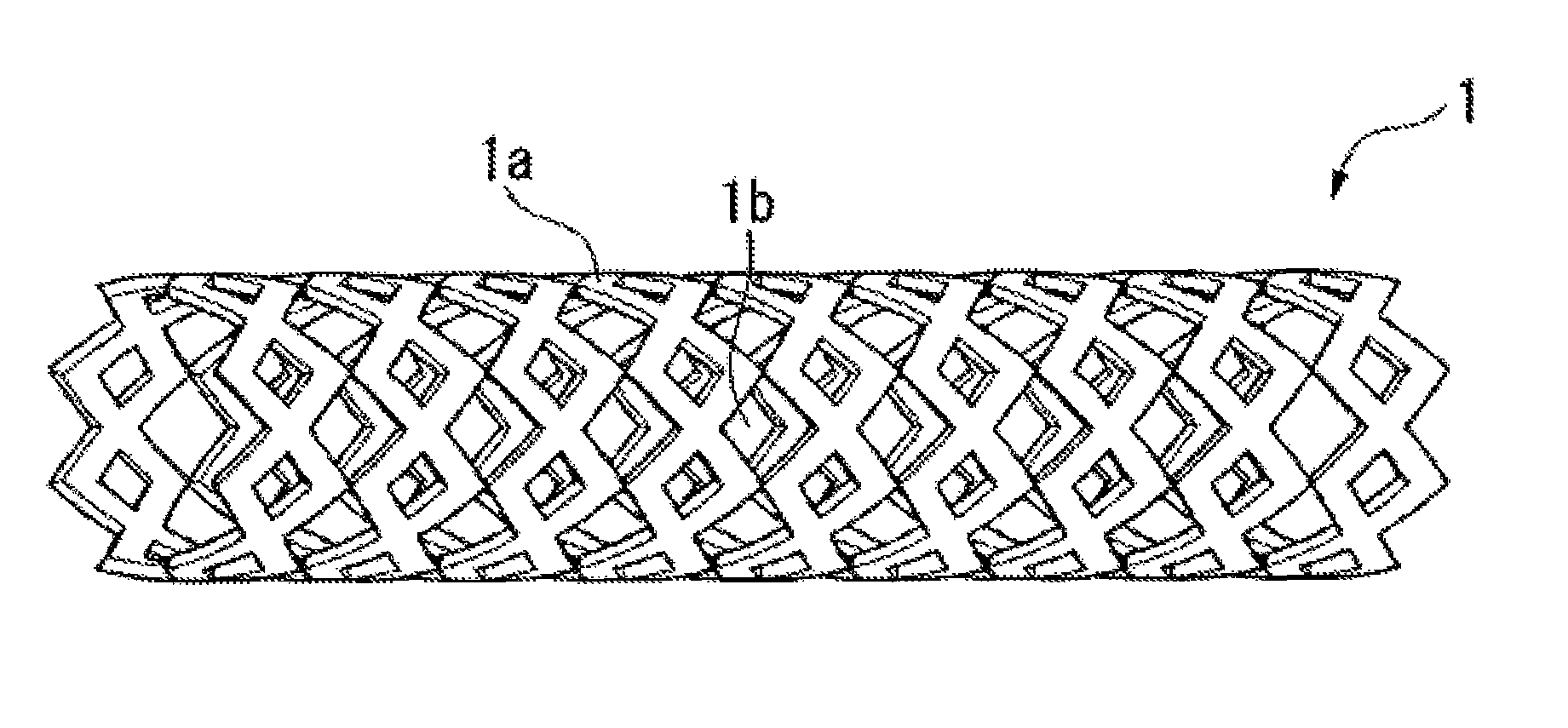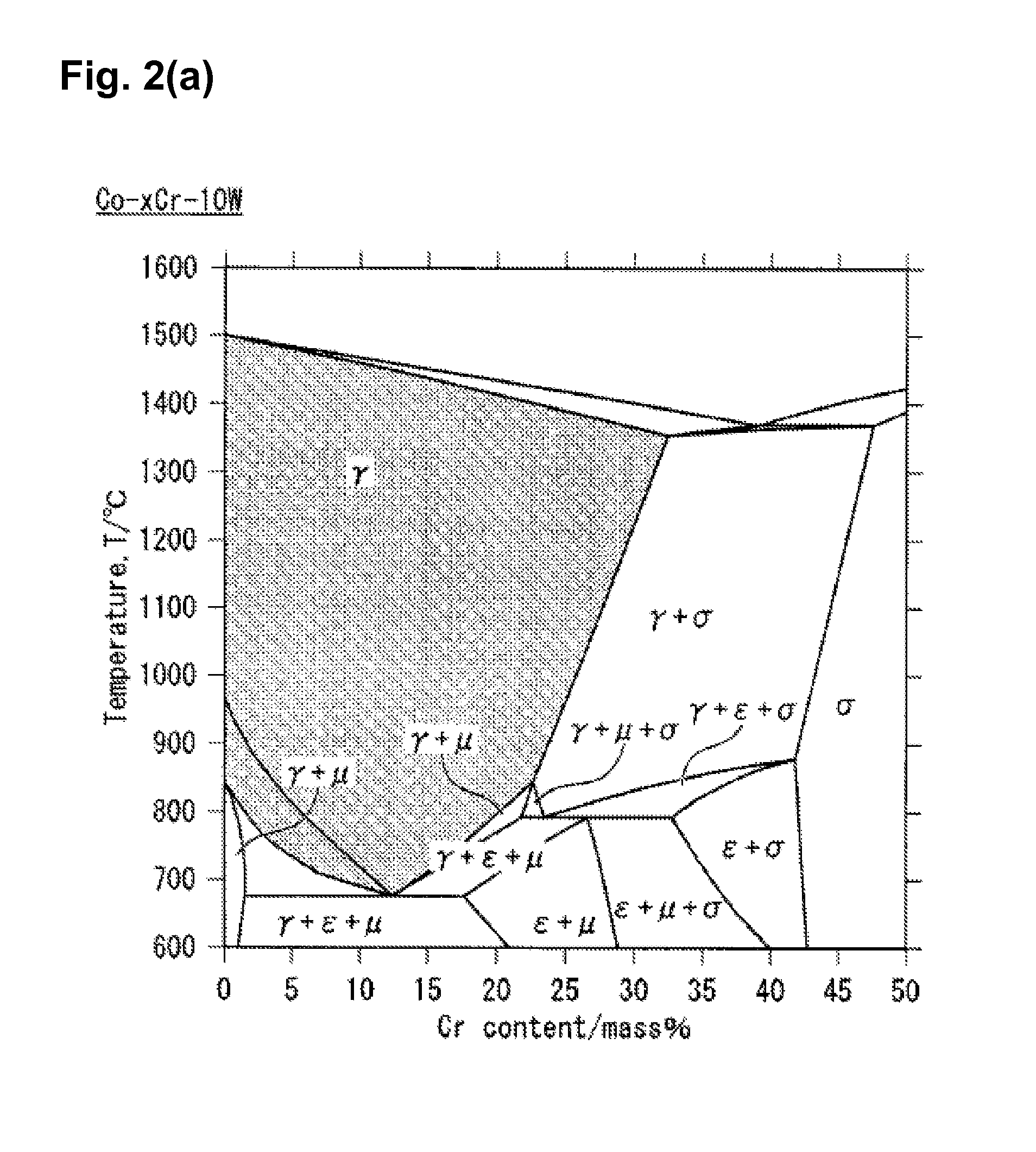Co-based alloys for biomedical applications and stent
a biomedical and alloy technology, applied in the field of co-based alloys for biomedical applications, can solve the problems of insufficient x-ray visibility, noticeably reduced plastic workability or the like, etc., and achieve the effects of improving the plastic workability of co-based alloys, improving plastic workability, and increasing the stacking fault energy of alloys
- Summary
- Abstract
- Description
- Claims
- Application Information
AI Technical Summary
Benefits of technology
Problems solved by technology
Method used
Image
Examples
embodiment
[0074]Hereinafter, the present invention will be further described in detail with reference to embodiments, however, the present invention is not limited to the following embodiments.
[0075]Alloys of embodiments 1 to 4 and comparison examples 1 to 4 in which each of components of alloy elements are composed as shown in Table 2 are manufactured using the points below.
[0076]In a high frequency vacuum induction melting furnace, each of components of the alloy elements was combined as shown in Table 2 and was melted to form alloy molten metal. Under Ar atmosphere of 800 Pa, the alloy molten metal was casted into a metallic mold and furnace cooling was carried out. The size of the cylindrical ingot is such that the upper diameter is 80 mm and the lower diameter is 70 mm, the height is 120 mm and the weight is 6 Kg. Next, in order to remove solidification segregation, a homogenization process was carried out to ingots at 1220° C. in an Ar atmosphere and for 10 hours using a high temperatur...
PUM
| Property | Measurement | Unit |
|---|---|---|
| height | aaaaa | aaaaa |
| diameter | aaaaa | aaaaa |
| diameter | aaaaa | aaaaa |
Abstract
Description
Claims
Application Information
 Login to View More
Login to View More - R&D
- Intellectual Property
- Life Sciences
- Materials
- Tech Scout
- Unparalleled Data Quality
- Higher Quality Content
- 60% Fewer Hallucinations
Browse by: Latest US Patents, China's latest patents, Technical Efficacy Thesaurus, Application Domain, Technology Topic, Popular Technical Reports.
© 2025 PatSnap. All rights reserved.Legal|Privacy policy|Modern Slavery Act Transparency Statement|Sitemap|About US| Contact US: help@patsnap.com



